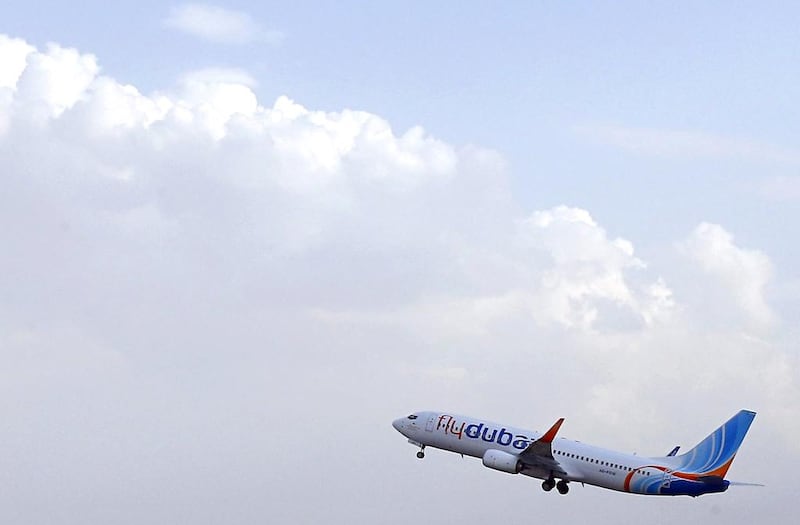Dubai-based low cost carrier flydubai reported a loss of Dh89.9 million during the first half of the year because of pressure from currency fluctuations.
It reported revenue of Dh2.3 billion, an increase of 5.4 per cent compared with the same period last year.
In March, flydubai’s Boeing 737-800 crashed in south-west Russia, killing all 62 people on board.
“It is too early at this stage to estimate the full cost of the accident and our focus remains on supporting the families of all those involved in the tragic accident,” said Ghaith Al Ghaith, the chief executive of flydubai, in an email to The National.
Flydubai had cash and cash equivalents, including the pre-delivery payments for future aircraft deliveries, of Dh2.4 billion.
During the first half, it took delivery of two Boeing 737-800 and two more in the second half, taking its fleet to 53.
Delivery of another four aircraft are scheduled during the second half. These deliveries are part of an order for 111 aircraft placed in 2013.
“We have seen continued pressure on yields due to the uncertain international economic situation set against a backdrop of lower oil prices and adverse currency exchange rates,” said Mukesh Sodani, the chief financial officer of flydubai, in a statement. “We maintain a sharp focus on cost improvement while pursuing our broader goal of expanding our network and our service offering.”
After a reduction in flydubai’s hedging position to 22 per cent this year from 41 per cent last year, fuel costs account for 23.5 per cent of the total operating cost, down from 30.6 per cent last year.
Some of the losses are from hedging, while others are from the cost of expansion both from set up costs as well as staffing and ground support, according to said Saj Ahmad, an analyst at London’s StrategicAero Research.
“The delivery of new 737-800s as well as its first tranche of new fuel-efficient 737 MAX 8s will further aid flydubai to maintain its competitive edge to suppress costs and develop new city pair frequency growth,” he said. “The crash in Russia did have an immediate hit on traffic demand, but this was limited and short term.”
The 737 MAX 8 aircraft are expected to enter service in the first quarter of next year with Southwest Airlines. Flydubai will be an early customer next year.
Flydubai’s six aircraft deliveries during the second half will add 77 flights per week from Dubai International Airport to destinations such as Almaty, Bahrain, Bangkok, Bratislava, Colombo, Erbil, Moscow and Yekaterinburg. Flights from Dubai World Central to Kathmandu will increase to 14 per week from October 10.
The airline will start a double daily service to Bangkok from November 29 from Dubai International.
“We expect a stronger second half,” said Mr Al Ghaith.
During the first six months, 4.9 million people flew on the airlines, an increase of 16.5 per cent compared with the same period last year. The number of passengers on business class rose by 19 per cent compared with the first half last year.
It also increased the frequency to destinations such as Bahrain, Baku, Belgrade, Bucharest, Muscat and Salalah during the first half.
The Middle Eastern carriers reported a 7.5 per cent increase in traffic in June, that eased from the double-digit growth earlier in the year, according to the International Air Transport Association in August. Capacity in the sector rose 14.3 per cent, which led to a 4.4 percentage point drop in the load factor to 69.9 per cent.
[ ssahoo@thenational.ae ]
Follow The National's Business section on Twitter





